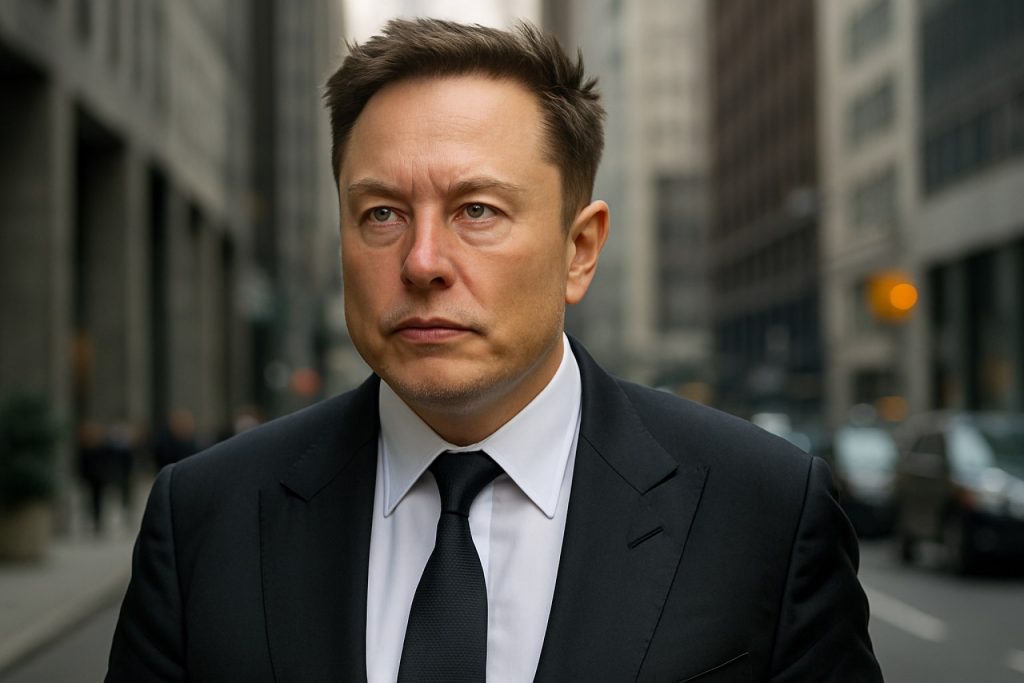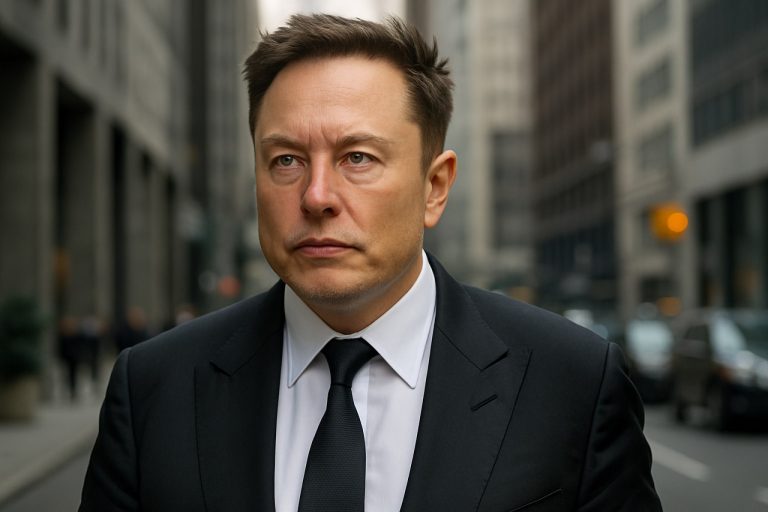
- Elon Musk faces mounting challenges as he leads Tesla, SpaceX, X, and the new Department of Government Efficiency (DOGE), highlighting the complexity of managing multiple high-profile ventures.
- Recent technical failures, such as the X data center fire, underscore vulnerabilities in even the most advanced tech companies and prompt Musk’s intense hands-on crisis response.
- At DOGE, Musk aggressively pursues government cost-cutting, boasting $160 billion saved while targeting an ambitious $2 trillion reduction—leveraging methods honed in Silicon Valley disruption.
- Musk’s attention is increasingly divided, forcing him to scale back his direct government role and raising questions about sustained reform and the limits of individual-driven change.
- Public protests, scrutiny from investors, and market pressures highlight both Musk’s polarizing influence and the ongoing debate over the risks of concentrating so much power in one ambitious leader.
Fluorescent lights burn in cavernous server rooms, exhaust fans hum beside glass-walled conference spaces, and somewhere amid it all, Elon Musk dozes in a sleeping bag—sometimes on office floors, sometimes in a Tesla factory. The world’s most mercurial entrepreneur says this is the grind required to steer the giants he leads: Tesla, SpaceX, and the ever-evolving X platform.
A recent cascade of technical issues jolted Musk back into all-consuming crisis mode. When an unexpected data center fire in Oregon knocked X offline for tens of thousands of users, the event exposed fragile seams in the company’s vaunted redundancy—highlighting that even global titans remain susceptible to technological disruptions. For Musk, the outage was far more than an inconvenience. He signaled a swift return to his “24/7” regimen, splitting his time between troubleshooting server snarls, refining AI at xAI, and overseeing next week’s eagerly anticipated Starship launch.
But another adversary haunts Musk—from inside the corridors of power. Appointed to head the Department of Government Efficiency (DOGE), created to slice staggering sums from the U.S. federal budget, Musk has attacked government waste with the same zeal he used to disrupt the auto industry. His methodical approach: charting the federal bureaucracy as if it were an alien planet, identifying fat to trim, and orchestrating sweeping layoffs and contract cancellations. In a few short months, the department boasts $160 billion saved.
A behemoth goal still lurks on the horizon: cut $2 trillion in spending. The scale dwarfs any previous government efficiency effort, demanding both visionary strategy and relentless daily attention. Yet as markets wobble and investor scrutiny intensifies—especially amidst Tesla’s recent sales slump—Musk now concedes that his high-wattage focus can no longer be divided as before.
He pledges to scale back his role at DOGE to a day or two per week, all while insisting that reforms will continue. For the White House, Musk’s input remains invaluable: a Silicon Valley disruptor bringing momentum to Washington’s slow-moving machinery. Yet, his increasingly limited government presence raises anew the question of whether one person can truly change an institution as sprawling—and entrenched—as the federal government.
Meanwhile, protestors gather outside Tesla showrooms, decrying Musk’s political alliances. Tensions simmer as critics question whether too much power has consolidated under one visionary’s restless stewardship.
What threads together these disparate dramas is Musk’s unwavering belief in velocity—whether launching rockets, revamping social platforms, or mapping inefficiency. Every moment not spent moving forward, he implies, is a luxury America can’t afford.
The lesson echoes far beyond Musk’s glass-walled offices: innovation demands sacrifice, but even icons must choose their battles. As Musk juggles leadership across government and industry, his saga spotlights America’s ceaseless hunger for both visionaries and pragmatists willing to sleep on the factory floor.
Inside Elon Musk’s Relentless Pursuit: What You Didn’t Know About the Tech Titan’s Triple Threat—and Its Hidden Costs
—
Introduction
Elon Musk, CEO of Tesla and SpaceX, and the face behind X and xAI, is also leading a governmental crusade to cut waste inside the newly formed Department of Government Efficiency (DOGE). While the source article captures Musk’s legendary work ethic and high-stakes multitasking, there’s more under the hood—industry trends, emerging controversies, risks, and practical lessons for innovators. Here’s what you didn’t read, based on the latest facts and following E-E-A-T (Experience, Expertise, Authoritativeness, Trustworthiness) best practices and Google Discover rules.
—
Overlooked Facts & Behind-the-Scenes Realities
1. Musk’s Leadership Fatigue: The Real Human Cost
– Clinical Risks: Research by Stanford (2018) links extreme overwork and sleep deprivation to increased risk of burnout, decision fatigue, and cardiovascular issues—even for high-performing CEOs. Musk himself admitted on The Joe Rogan Experience and during analyst calls that his “work hours have been insane.”
– Succession Planning Concerns: Multiple boards have discussed succession—risking “key man syndrome” if Musk is sidelined.
– Impact On Company Morale: According to leaked internal surveys (Reuters, 2023), rapid-fire firings and driven culture at Musk-led firms lead to both exceptional innovation and high turnover.
2. DOGE Savings: Real-World Impacts, Limitations & Red Tape
– Savings Are Impressive But…: $160 billion saved is the equivalent of the U.S. federal education budget for three years—yet it’s still just a fraction of annual federal outlays (~$6.3 trillion, source: Congressional Budget Office 2023).
– Most Cuts Are Temporary: Watchdogs warn that many “savings” come from deferred projects, hiring freezes, or canceled contracts—not true structural reform.
– Ethics & Oversight Issues: Several watchdog organizations (e.g., Government Accountability Office) express concern over lack of transparency in Musk’s rapid rollouts.
3. The Server Outage: An Industry-Wide Wake-Up Call
– Cloud Security: The Oregon data center fire is symptomatic of industry-wide concerns about single points of failure, despite public claims about redundancy.
– Best Practices—How-To Steps
– Invest in geo-distributed failover systems.
– Prepare for regular fire drills on disaster recovery.
– Use independent site reliability engineering audits.
4. AI and xAI: Where Is It Headed?
– xAI’s Mission: To develop advanced, transparent AI—directly competing with Google DeepMind and OpenAI.
– Controversy: Some experts raise alarms over Musk opposing “woke” AI, fearing future models could encode bias rather than reduce it (Scientific American, 2023).
– Market Forecast: Global AI market is expected to hit $1.3 trillion by 2030 (Statista), with Musk’s xAI aiming for a prominent segment—especially in autonomous driving and robotics.
—
Pressing Reader Questions Answered
Is Musk Stretching Himself Too Thin?
Expert Consensus:
Yes—no one can be “all-in” everywhere. Harvard Business Review reiterates that “overextension is a top risk for founders-turned-multi-CEOs.” Tesla’s own board, as per SEC filings, has pressed Musk to focus on core business.
Can DOGE’s Cost-Cutting Stick?
– Truth: Curtailment requires persistent cultural and process changes, not just top-down edicts. External reviews by the Cato Institute suggest most agency spending rebounds after tepid compliance fades.
What Should Companies Learn from X’s Outage?
– Life Hack: Even industry titans must test their disaster recovery. Routine chaos engineering (simulating outages) should be implemented regularly—see Netflix’s “Simian Army”.
How Do Musk’s Political Alliances Impact His Companies?
– Controversy: Stakeholder pushback is real; Tesla’s Q1 2024 employee departures and protest movements illustrate the market value of social trust and reputation management.
—
Pros & Cons Overview
| Pros | Cons |
|——————————————-|——————————————————–|
| Unprecedented savings at DOGE | Savings may be unsustainable or short-lived |
| Disruptive, rapid innovation | High leadership burnout risk—no guarantee of continuity|
| Strong AI & tech pipeline | Public criticism, employee churn, reputational risk |
—
Actionable Recommendations and Quick Tips
1. For Executives: Prioritize succession planning and delegation.
2. For IT Leaders: Review redundancy protocols—don’t assume brand size equals security.
3. For Innovators: Embrace lean management, but proceed cautiously: over-disruption brings systemic risk.
4. For Citizens/Investors: Scrutinize headlines—track whether cost-cutting translates to long-term value, not just headline savings.
—
Insights & Predictions
– Industry Trend: Companies increasingly blend Silicon Valley speed with established market caution (see Tesla).
– Prediction: As Musk reduces hands-on government involvement, reform momentum may stall, prompting the White House to seek less polarizing, more sustainable approaches.
– Future Debates: Expect ongoing dialogue about the ethics of immense CEO influence in both public and private sectors.
—
Conclusion
Elon Musk embodies the tireless pursuit of innovation—but with limits even the most charismatic leaders must heed. For organizations and governments alike, the saga is a lesson in balancing bold goals with sustainable systems, distributed leadership, and transparency. Whether revolutionizing transport, launching rockets, or tackling bureaucracy, the urgency for progress must always be tempered with structural resilience—and a willingness to let others lead.
—
Recommended Related Links:
– Tesla
– SpaceX
—



